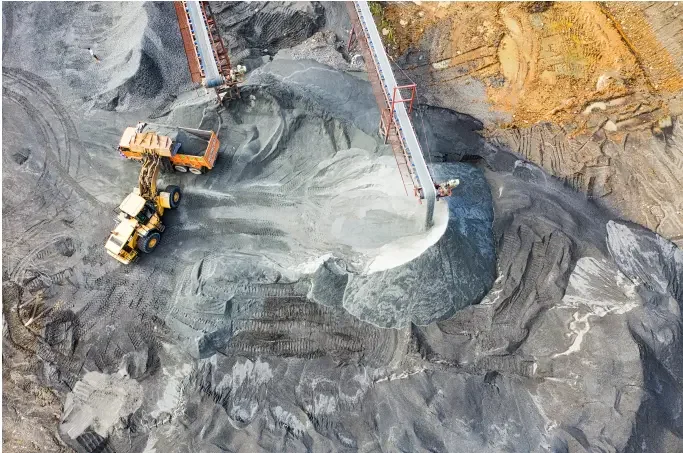Humanity’s ability to create permanent structures has been an essential part of civilization for thousands of years and was crucial for our transition from hunter-gatherers to settled peoples. As groups of people settled down in a single place, we have had to advance construction techniques and technologies to further the development of our societies, our ability to advance construction techniques has led to the creation of structures that inspire humanity and continue to push the boundaries of what we think is possible.
Recently however, the construction industry has been slow in adopting new innovations that have helped revolutionize other industries, at a time where it is expected that 300 million new homes are needed by 2030 and construction related activities contributed to 37% of global CO2 emissions in 2021, the need to adopt new technologies that will increase efficiency and reduce emissions is of paramount importance and 3D printing has been touted as the solution to the construction industry’s woes.
What is 3D Printing?
3D printing technology itself is by no means new and has been around since at least the 1980s. Very basically, a digital model is created using computer-aided design (CAD) software, then sent to a 3D printer which layers material until the needed object is built. 3D printing has been booming recently and 3D printers have become more accessible to business, researchers, and household consumers; it would have cost USD 300,000 to buy a 3D printer in 1987, now they can be bought on for about USD 150.
Increased accessibility to the technology has also widened the scope of materials used, it is no longer limited to polymers, but has extended to metals, ceramics, and biological material. As new materials have been used, new industries have utilised 3D printing, further widening the scope of applications. 3D printers have been used with chocolate, and in 2018 they were used to print a meat-free steak from vegetables. 3D printed parts have been used in airplanes and helicopters since at least 2015 with Boeing and General Electric praising the technology for simplifying supply chains. It has also been used in the medical industry to plan surgeries, create prosthetics and implants, and even produce medicine. It is no surprise then that 3D printing has made its way into the construction industry as well.
Current State of 3D Printing in Construction
As discussed previously the construction industry has been slow to adopt innovation, but the use of 3D printing in construction has been growing in recent years. The claims made by 3D printing have made it difficult to ignore; it can construct entire buildings in a matter of days, compared to months or even years using traditional construction methods, the reduction in construction time can translate to significant cost savings and reduced labour costs. It’s usage of CAD software makes it more precise, allowing for higher levels of accuracy and consistency, while reducing material waste as the exact amount of material needed is used. Finally, it can be used to aid sustainability, recycled materials can be used and because a 3D printer can use only the exact amount of material needed to create a specific component, rather than creating waste from excess material.
3D printing’s perceived ability to address the majority of the industry’s bottlenecks have allowed for implementation on larger scales. No longer are 3D printers being used to create “the first 3D printed house” or “the largest 3D printed house” now they are being used to in large scale residential developments and governments have paid attention with the Government of Dubai announced the Dubai 3D Printing Strategy in 2016 with one of the three key sectors being construction and the key goal being 25% of buildings in Dubai be based on 3D printing technology by 2030.
Limitations of 3D Printing in Construction
Despite all the marketed benefits of 3D printing, there are also significant limitations to consider. The materials used by 3D printers being the most considerable, although touted as more sustainable than traditional building methods, it is almost certain that they will still use concrete as the primary building material. There have been cases of different materials being used such as in Italy, where locally sourced clay was used to print a house. However, the ability to produce housing on a large scale has yet to be feasible.
Which brings us to another significant limitation of 3D printing in construction; a large portion of projects created by 3D printers have been tests. Although there are now planned large housing projects that will primarily use 3D printers, they are almost always limited to Europe and the United States, where high labour costs act as a barrier to affordable housing and may necessitate the use of alternative solutions to decrease costs. However, for many parts of the world where the majority of new homes will need to be built, and labour costs are lower than importing a 3D printer, it remains to be seen if 3D printing would still be a practical solution. The cost of 3D printers and associated equipment can be prohibitively expensive for construction companies, especially smaller ones, making it difficult to justify the investment. Another limitation is the size of 3D printers, while they have become larger in recent years, they are still limited in size. This limitation makes it challenging to print larger building components, will necessitate printing components in smaller pieces and assembling them on-site.
Finally, although 3D printing has been said to print entire houses the reality is that the printers have been used to create the walls only, the remainder of the house; electricity, plumbing, heating have to be installed manually by construction workers. The way in which 3D printing has been marketed; as the solution to the global housing crisis. May prove detrimental to its future as in its current state it is nowhere near the solution to the and its inability to deliver on its promises might slowdown the integration of 3D printing into the construction industry. Which is a shame, because 3D printing is a promising industry and its further integration into the construction industry has the potential to reduce construction times, costs, and environmental impact while increasing precision and customization.
Furthermore, there is a wider conversation to be had about automation and 3D printing. This is a technology that is aimed to primarily reduce labour costs which means that should it prove to be feasible and is adopted on a wider scale, there will be significant job loss, as construction workers are replaced by smaller teams of technicians. This impact will not necessarily be negative across the world as countries that rely on large migrant populations for labour may prefer to use the technology.
Finally, one is reminded about the Legend of John Henry; when faced with the loss of his job to a steam drill John Henry asked the machine “well can you turn a jack, can you lay a track, can you pick and shovel too?” Should John Henry pose the same question to a 3D printer, it would probably respond with “I could build a wall if the weather is suitable” which, given the current state of 3D printing in construction, begs the question “You could use a 3D printer to build a house but why would you?”
References
“2022 Global Status Report for Buildings and Construction.” UN Environment Programme , November 9, 2022. https://www.unep.org/resources/publication/2022-global-status-report-buildings-and-construction
“Dubai 3D Printing Strategy.” The United Arab Emirates’ Government, n.d. https://u.ae/en/about-the-uae/strategies-initiatives-and-awards/strategies-plans-and-visions/industry-science-and-technology/dubai-3d-printing-strategy
Monroe, Rachel. “Can 3-D Printing Help Solve the Housing Crisis?” The New Yorker, January 16, 2023. https://www.newyorker.com/magazine/2023/01/23/can-3-d-printing-help-solve-the-housing-crisis
“The Rise of 3D-Printed Houses.” The Economist, August 18, 2021. https://www.economist.com/science-and-technology/the-rise-of-3d-printed-houses/21803667
Wangler, Timothy, Nicolas Roussel, Freek P. Bos, Theo A.M. Salet, and Robert J. Flatt. “Digital Concrete: A Review.” Cement and Concrete Research 123 (2019): 105780. https://doi.org/10.1016/j.cemconres.2019.105780
“What Is Medical 3D Printing-and How Is It Regulated?” The Pew Charitable Trusts, October 5, 2020. https://www.pewtrusts.org/en/research-and-analysis/issue-briefs/2020/10/what-is-medical-3d-printing-and-how-is-it-regulated
Zelinski, Peter. “GE Team Secretly Printed a Helicopter Engine, Replacing 900 Parts with 16.” Additive Manufacturing, September 30, 2020. https://www.additivemanufacturing.media/articles/ge-team-secretly-printed-a-helicopter-engine-replacing-900-parts-with-16










Comments